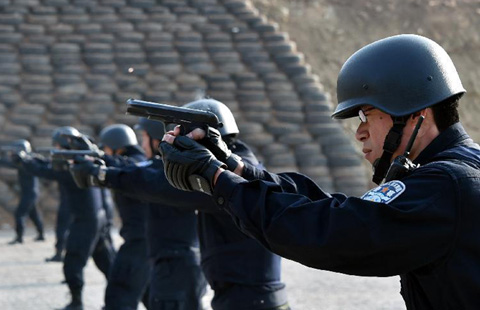
BEIJING - A trade tumble in China in January has sparked concerns about one of the main growth engines of the world's second-largest economy. However, economists say the data is "distorted" and the sharp contraction of exports and imports may prove short-lived.
Trading in January proved much weaker than expected, with exports falling by 3.2 percent and imports plunging 19.7 percent, General Administration of Customs (GAC) data showed on Sunday.
But UBS economist Wang Tao said the headline readings are "on the surface too misleading to provide an accurate assessment of trends to come in the year ahead."
Other economists interviewed by Xinhua forecast China's 2015 foreign trade would grow steadily thanks to a better trade environment, stronger policy support for the "Belt and Road" initiatives, the establishment of more free trade zones and booming cross-border e-commerce.
Despite the disappointment of the headline figures, external demand and underlying export growth stayed largely firm, and imports remained anemic but did not collapse, Wang stressed.
Wang said UBS maintains its 2015 China trade forecasts, which predict export growth of 7.5 percent and import growth of 3 percent for the whole year.
For imports, which fell 19.7 percent from a year earlier, the largest drop in more than five years, Wang said slumping global commodity prices took a heavier toll on import growth.
Liu Xuezhi, a researcher with the Bank of Communications, attributed the sharp decrease in imports to sharp decline in commodities prices, ongoing industrial upgrades and efforts to phase out overcapacity.
Concerning exports, Wang attributed the deterioration to "temporary distortions from a base effect and Chinese New Year, along with the USD's large movement against other currencies."
Last year's high base may have cut around 2 to 3 percentage points from headline annual growth of exports for China, according to UBS.
Volatile Chinese New Year effects, which are hard to predict and quantify accurately, probably further dragged down headline growth of exports, as the peak of pre-Chinese New Year trade activity may not occur until early to mid-February, said Wang.
The festival, an important time for family reunions, occurs in January or February along with a 40-day travel rush. It is due on Feb 19 and the rush is estimated to involve 2.8 billion trips this year.
January's sharp deterioration in exports doesn't quite square with the fundamentals of China's external demand, which seems to have remained largely solid, according to a research note written by Wang.
The US non-manufacturing ISM index edged higher and January's employment report pointed to ongoing labor market improvements, while business confidence in Europe has kept climbing, partially boosted by its QE program.
The Euro has been depreciating against the US dollar by a larger margin than the renminbi against the US dollar, resulting in real depreciation of the renminbi against the euro and denting the price advantages of Chinese product, said Ding Chun, a research fellow at Shanghai-based Fudan University.
However, the European economy is poised to recover in the second half of this year, which will boost China's export to Europe, Ding said.
In addition, government policies will also help support export growth.
GAC head Yu Guangzhou said the country will further balance the quality and quantity of export expansion with more policy support for competitive products and new industries, so as to improve the role of Chinese companies in the global value chain.








